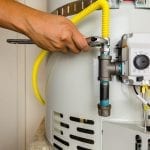Important Maintenance Tips for Your Home's Hot Water SystemEffective Techniques for Caring for Your Home's Hot Water System
Important Maintenance Tips for Your Home's Hot Water SystemEffective Techniques for Caring for Your Home's Hot Water System
Blog Article
The author is making a number of great pointers on Tips on Maintaining a Water Heater as a whole in this post directly below.

Hot water is necessary for day-to-day comfort, whether it's for a rejuvenating shower or cleaning dishes. To ensure your warm water system runs efficiently and lasts longer, routine upkeep is key. This short article supplies sensible pointers and insights on exactly how to preserve your home's warm water system to avoid disruptions and expensive repair services.
Intro
Maintaining your home's hot water system may appear overwhelming, but with a few basic actions, you can guarantee it runs smoothly for years to come. This overview covers everything from understanding your hot water system to DIY upkeep ideas and recognizing when to call professional help.
Significance of Preserving Your Hot Water System
Routine upkeep not just expands the life expectancy of your hot water system but also guarantees it runs effectively. Disregarding upkeep can bring about lowered performance, greater energy bills, and even early failing of the system.
Indicators Your Warm Water System Requirements Maintenance
Recognizing when your warm water system needs attention can protect against significant problems. Look out for signs such as irregular water temperature, strange sounds from the heating system, or rustic water.
Flushing the Hot Water Heater
Purging your water heater removes debris accumulation, improving performance and prolonging its life.
Monitoring and Replacing Anode Rods
Anode rods protect against rust inside the tank. Evaluating and replacing them when worn out is critical.
Complex Concerns Needing Professional Aid
Examples include significant leakages, electrical issues, or if your water heater is regularly underperforming.
Routine Specialist Upkeep Perks
Professional maintenance can consist of extensive inspections, tune-ups, and making certain compliance with safety and security requirements.
Evaluating and Changing Temperature Setups
Adjusting the temperature level settings makes sure ideal performance and security.
DIY Tips for Upkeep
You can perform a number of upkeep tasks on your own to maintain your hot water system in top problem.
Checking for Leakages
Frequently inspect pipelines and connections for leakages, as these can lead to water damage and greater bills.
Comprehending Your Hot Water System
Before diving right into maintenance tasks, it's handy to understand the fundamental elements of your warm water system. Generally, this includes the hot water heater itself, pipelines, anode rods, and temperature level controls.
Regular Monthly Upkeep Tasks
Regular month-to-month checks can help capture minor problems before they rise.
Evaluating Stress Alleviation Valves
Testing the pressure safety valve guarantees it functions properly and avoids excessive pressure buildup.
Protecting Pipes
Protecting warm water pipes minimizes warmth loss and can save power.
When to Call a Professional
While DIY maintenance is helpful, some concerns require professional know-how.
Verdict
Normal maintenance of your home's hot water system is necessary for efficiency, durability, and price savings. By complying with these pointers and knowing when to seek expert aid, you can make certain a dependable supply of hot water without unforeseen interruptions.
How to Maintain an Instant Hot Water Heater
Before tinkering with your hot water heater, make sure that it’s not powered on. You also have to turn off the main circuit breaker and shut off the main gas line to prevent accidents. Also turn off the water valves connected to your unit to prevent water from flowing into and out of the appliance. 2. When you’re done, you have to detach the purge valves’ caps. These look like the letter “T” and are situated on either side of the water valves. Doing so will release any pressure that has accumulated inside the valves while at the same time avoid hot water from shooting out and burning your skin. 3. When the purge valves’ caps are removed, you have to connect your hosing lines to the valves. Your unit should have come with three hoses but if it didn’t, you can purchase these things from any hardware or home repair shops. You can also get them from retail stores that sell water heating systems. Read the user’s manual and follow it to complete this task properly. When the hosing lines are connected, open the purge port’s valves. 4. You should never use harsh chemical cleaners or solutions when cleaning your unit. Make use of white vinegar instead. It should be undiluted and you’ll probably use about 2 gallons. 5. Now flush your water heater. This task should probably take about 40 minutes. We can’t give you specific directions for this because the procedure is carried out depending on the type, model and brand of your heater. With that being said, refer to the user’s manual. 6. When you’re done draining the unit, you have to turn off the purge port valves again. Remove the hosing lines that you earlier installed on each of the water valves. Put the valve caps (purge port) back in their respective places and be very careful so as not to damage the rubber discs that are found inside these caps. 7. Now that everything’s back in place, check your user’s manual again to find out how to reactivate your water heating system. 8. Once it is working, turn one of your hot water faucets on just to let air pass through the heater’s water supply pipes. Leave the tap on until water flows smoothly out of it. https://www.orrplumbing.com/blog/2014/september/how-to-maintain-an-instant-hot-water-heater/

I was brought to that report about Tips on Maintaining a Water Heater through an associate on our other site. Loved our post? Please share it. Let other people find it. Thank-you for going through it.
Call Today Report this page